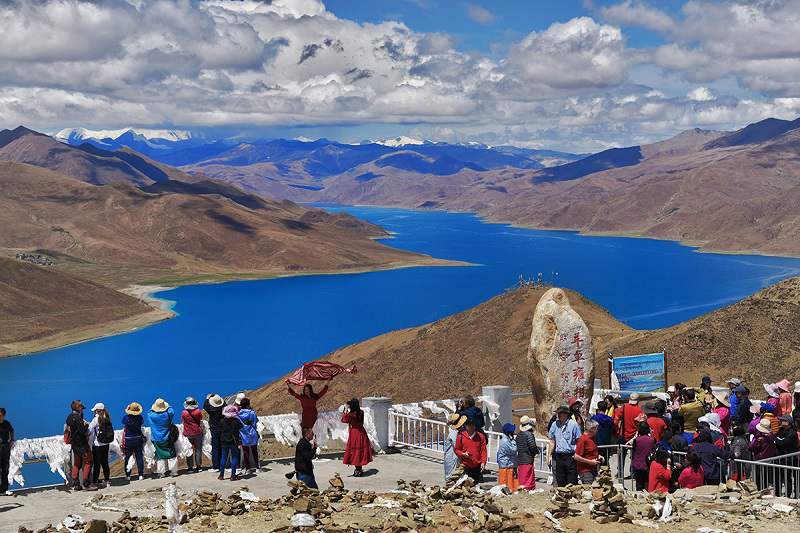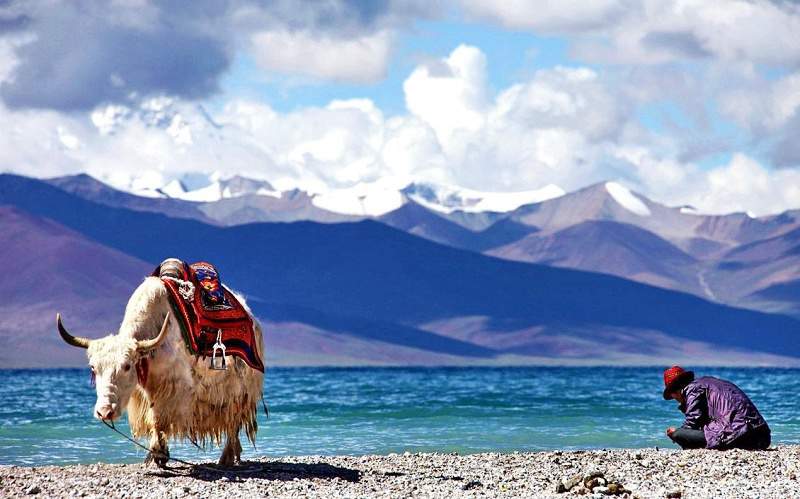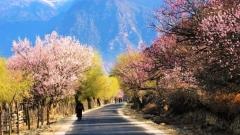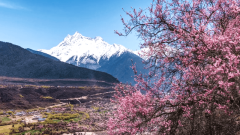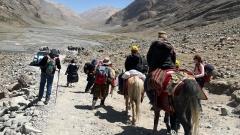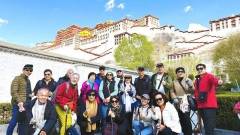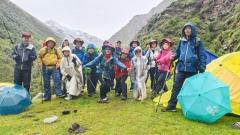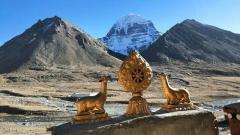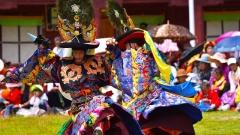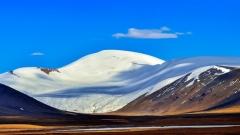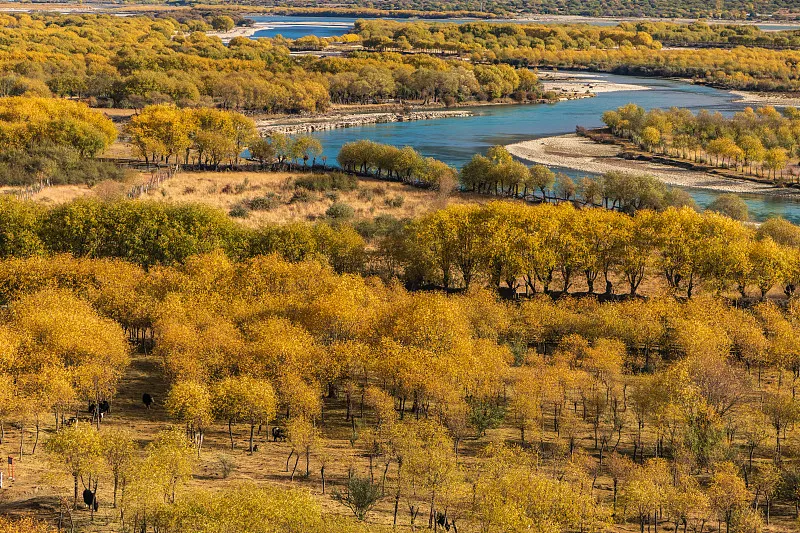Nestled at an elevation of 3,650 meters on the high-altitude Lhasa Valley Plain, Lhasa has long captivated adventurous travelers and spiritual pilgrims alike. Known as the “City of Sunshine” for its exceptionally clear skies and more than 3,000 hours of annual sunlight, Lhasa is often called the spiritual heart of Tibet. From its UNESCO-listed monuments and ancient monasteries to the vibrant streets of its old quarter and the serene beauty of its surrounding lakes, Lhasa offers an immersive journey into Tibetan culture, history, and natural wonder.
In this in-depth guide, we explore the 10 things Lhasa is most famous for, providing practical insights and insider tips to help you experience the best of Lhasa with ease.
1. Lhasa, the “Holy City of Sunshine”
Lhasa’s nickname stems from its extraordinary altitude and climate. Perched at 3,650 m (11,975 ft) above sea level, it enjoys crisp mountain air, wide vistas of the Himalayas, and brilliantly clear, azure skies. Sun-seekers and photographers relish the fact that Lhasa boasts over 3,000 hours of sunshine each year—ideal for capturing the city’s stunning architecture against dramatic backdrops.
More than a meteorological wonder, Lhasa’s bright light has spiritual significance: Tibetan Buddhists believe sunlight purifies negative energy and illuminates the path to enlightenment. No matter the season, make time to step outdoors early in the morning or late afternoon to feel the golden glow that bathes monasteries, palaces, and prayer flags in a heavenly radiance.
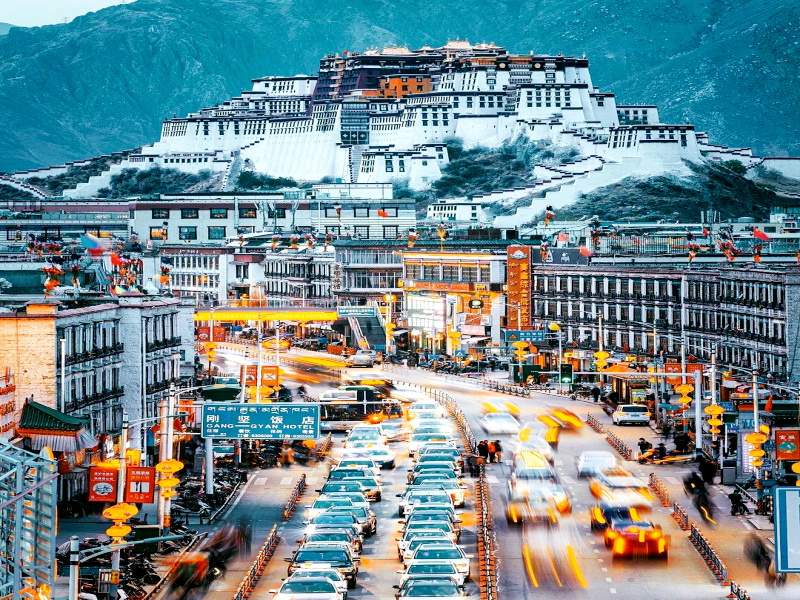
Lhasa City
2. The Legacy of King Songtsen Gampo
The origins of Lhasa’s spiritual and political importance trace back to the 7th century AD and the reign of Tibetan King Songtsen Gampo, the monarch credited with unifying Tibet under one rule. Before his arrival, Lhasa was little more than a marshy plateau. When Songtsen Gampo declared it his capital, the city began to blossom into the beating heart of an empire.
His two marriages—first to Princess Bhrikuti of Nepal and later to Princess Wencheng of China’s Tang Dynasty—cemented alliances and introduced Buddhism to Tibet. To honor his brides, Songtsen Gampo commissioned two of Lhasa’s greatest landmarks: the Jokhang Temple, built for Bhrikuti, and the Potala Palace, later expanded under successive Dalai Lamas. Today, these monuments stand as living testaments to his visionary leadership and the birth of Tibetan Buddhism.
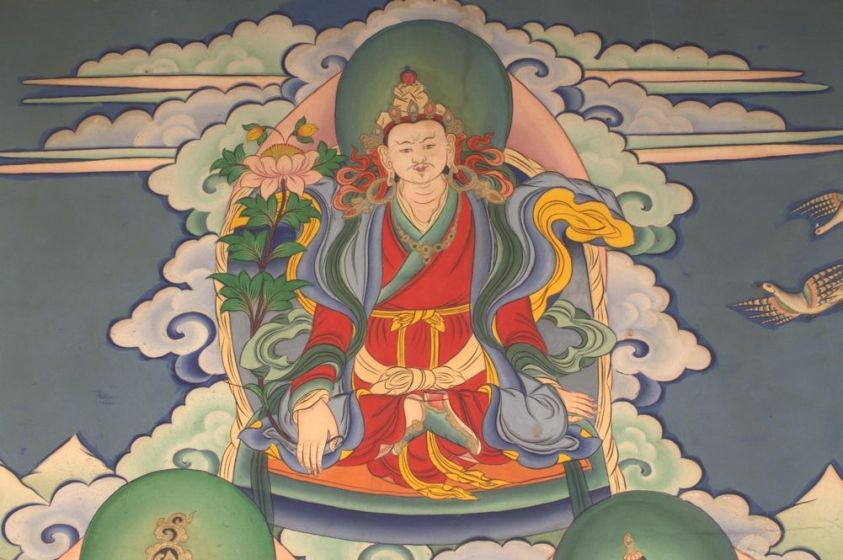
King Songtsen Gampo
3. Jokhang Temple: Tibet’s Holiest Shrine
Often called the spiritual nucleus of Lhasa, the Jokhang Temple is revered as Tibet’s most sacred Buddhist site. Constructed in the 7th century at the behest of King Songtsen Gampo, it houses the Jowo Rinpoche statue—a life-size effigy of the adolescent Buddha, brought to Tibet by Princess Wencheng. Tibetans believe touching or even glimpsing this statue accrues immense spiritual merit.
Key Tips for Visiting Jokhang Temple:
- Pilgrim Experience: Arrive early to witness devout pilgrims performing full-body prostrations around the temple’s perimeter.
- Circumambulation (Kora): Join locals in walking clockwise around the temple, spinning prayer wheels and reciting mantras.
- Guided Exploration: To delve into the temple’s rich history and symbolic art, consider booking a guided tour with local experts who can explain murals, ritual objects, and hidden chapels.
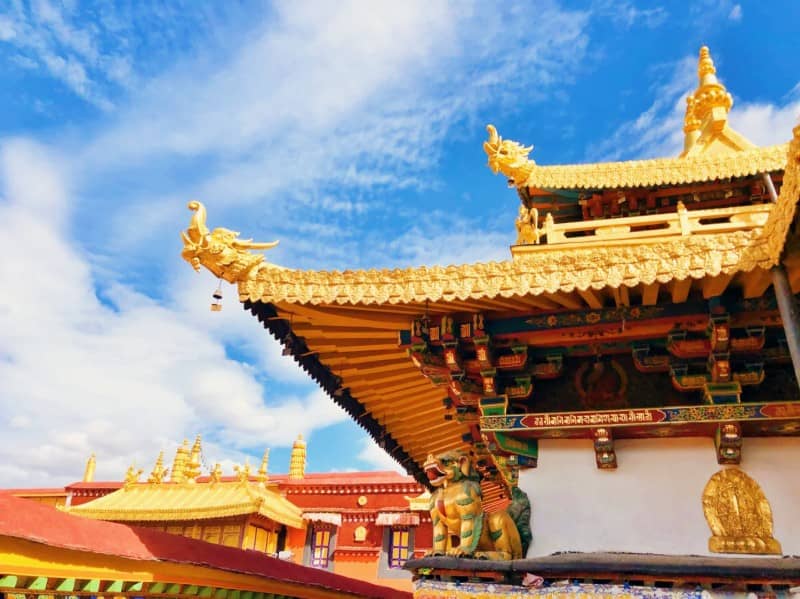
Jokhang Temple
4. Potala Palace: Winter Residence of the Dalai Lamas
Dominating the skyline from its perch on Red Hill, the Potala Palace is Lhasa’s most iconic landmark. Once the winter home and administrative center for ten successive Dalai Lamas, this fortress of whitewashed walls and crimson facades houses shrines, grand assembly halls, and the gilded tombs of past Dalai Lamas.
Highlights of a Potala Palace Tour:
- White Palace: Explore the living quarters of the Dalai Lamas, including private chapels and the throne room.
- Red Palace: Discover chapels dedicated to Buddhist deities, vast murals depicting sacred narratives, and the magnificent stupas enshrining the remains of Dalai Lamas.
- Rooftop Terrace: Climb to the top for panoramic views over Lhasa’s red-tile roofs and prayer-flag-draped hillsides.
- Potala Kora: After exiting, undertake the modest pilgrimage circuit around the palace’s base to soak in the atmosphere and encounter local vendors selling incense, prayer beads, and handicrafts.
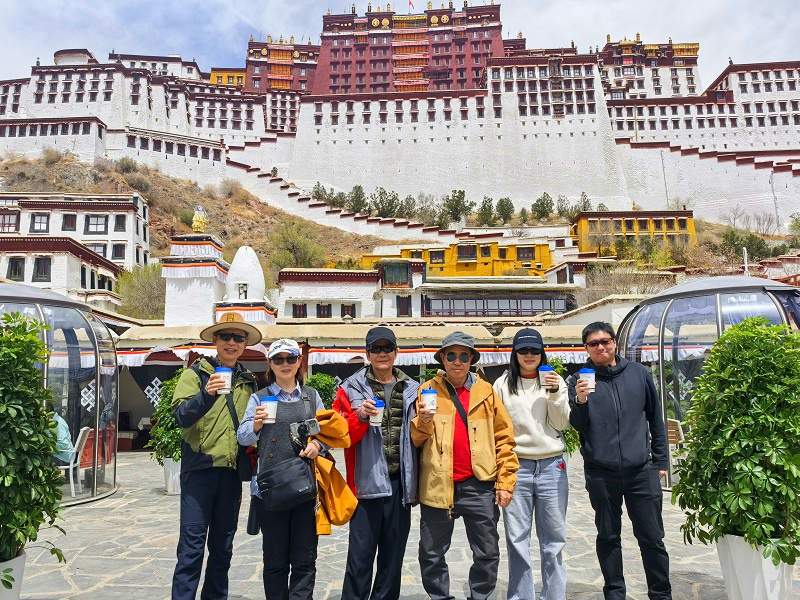
Potala Palace
5. Barkhor Street: Lhasa’s Living Heritage
Encircling Jokhang Temple, Barkhor Street is both a bustling bazaar and an open-air museum of Tibetan daily life. Pilgrims, shoppers, and street vendors converge here, creating a tapestry of color, sound, and ritual.
- Pilgrim Circuit: Walk clockwise with worshippers as they circumambulate the temple, spinning leather prayer wheels and touching the mani walls carved with sacred mantras.
- Market Treasures: Browse stalls brimming with Tibetan jewelry, thangka paintings, yak-wool textiles, and fragrant incense.
- Local Eateries: Sample savory momos, tsampa (barley flour), butter tea, and other regional specialties in teahouses that have served travelers for centuries.
For an authentic cultural photoshoot, consider dressing in traditional Tibetan attire with the help of a local photography guide—an unforgettable way to commemorate your Lhasa adventure.
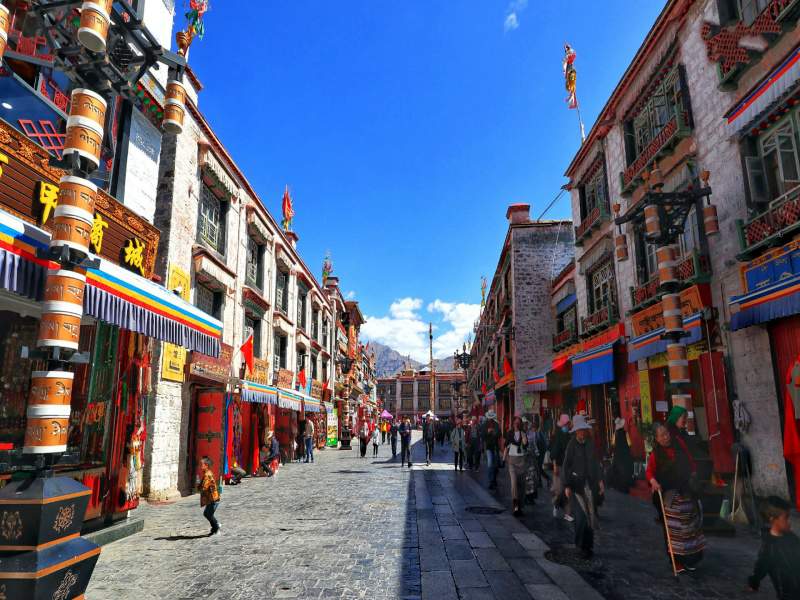
Barkhor Street
6. Norbulingka: The Dalai Lamas’ Summer Garden
Just west of the city center, Norbulingka (“Jewel Garden”) served as the summer residence of the Dalai Lamas from the 18th century onward. Lush lawns, ornate pavilions, and tree-lined avenues offer a refreshing contrast to the city’s ancient stone architecture.
- Gardens & Pavilions: Stroll through flowerbeds, admire carved wooden gateways, and relax alongside koi ponds.
- Shoton Festival: In August, Norbulingka comes alive during the Yogurt Banquet, Tibetan opera performances, and the dramatic unveiling of giant thangka scrolls at nearby Drepung Monastery.
- Local Pastimes: Join Lhasa’s residents on picnic blankets, playing board games and sharing homemade treats under the shade of willow trees.
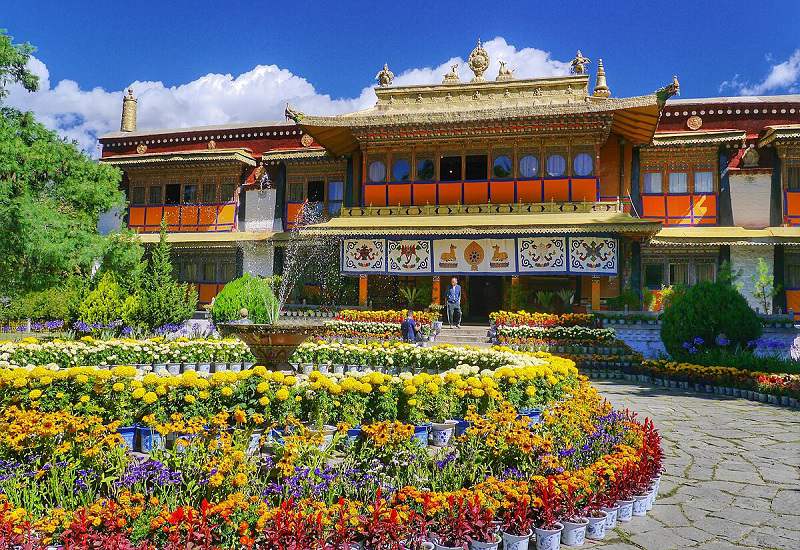
Norbulingka
7. Witness a Tibetan Monk Debate at Sera Monastery
Lhasa’s monastic culture reaches its zenith in the lively debates held by monks across the city’s monasteries. Sera Monastery, located just north of downtown, hosts the most famous sessions.
- When & Where: Every afternoon (15:00–17:00, except Sundays) in the monastery’s debate courtyard.
- What You’ll See: Young monks challenge each other with rapid-fire questions, punctuated by theatrical claps and dramatic foot stomps that illustrate logical points.
- Why It Matters: These debates are more than rituals—they are living classrooms where theological precision and philosophical insight are honed.
Arriving early ensures you’ll secure a good vantage point to absorb both the spectacle and the subtle doctrinal nuances.
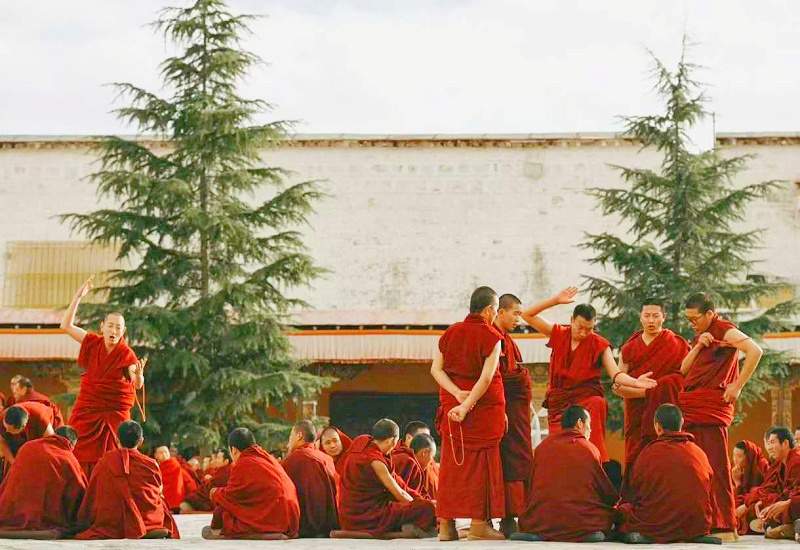
Tibetan Monk
8. Drepung Monastery: A “Rice Heap” of History
Once home to up to 7,700 monks, Drepung Monastery was Tibet’s largest Gelugpa institution. Founded in the 15th century, its name translates to “rice heap,” reflecting the sprawling arrangement of its white-washed halls across a hillside.
- Architectural Highlights: Explore the extensive academic quarters, chapels adorned with colorful frescoes, and the massive assembly hall where monks gather for prayers.
- Tsongkhapa Rock: See the natural rock face etched with the image of Tsongkhapa, the founder of the Gelug school, and inscribed with sacred mantras.
- Shoton Festival: In July or August, join pilgrims for the morning Thangka-unfolding ceremony on the monastery’s south wall followed by opera performances and yogurt feasts.
A guided tour here provides richer context on the monastery’s role in Tibetan history and the daily routines of resident monks.
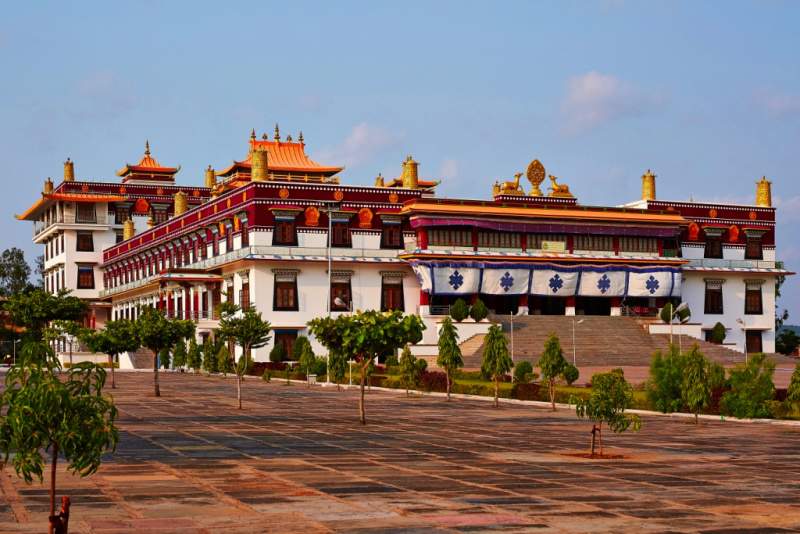
Drepung Monastery
9. Explore the Sacred Lakes: Yamdrok & Namtso
Beyond Lhasa’s urban charms lie two of Tibet’s most revered lakes, each offering unique natural beauty and spiritual resonance.
Yamdrok Lake (4,441 m)
- Distance: Approx. 100 km (2 hrs) southwest of Lhasa.
- Highlights: Turquoise waters framed by snow-capped peaks; little wooden prayer shrines dotting the shoreline; local villages where you can savor hearty Tibetan fare.
- Activities: Lakeside meditation, yoga sessions, lakeshore walks, and visits to remote hermitages perched on cliffs above the water.
Namtso Lake (4,718 m)
- Distance: Approx. 250 km (5–6 hrs) north of Lhasa.
- Highlights: One of the world’s highest saltwater lakes, famous for its crystal-blue waters and windswept shores.
- Activities: Camping under starlit skies, riding yaks along the sandbars, and venturing to Tashi Dor Island’s caves for solitary retreats. A two-day excursion is recommended to fully appreciate the vastness and serenity.
10. Riding the Qinghai-Tibet Railway: The World’s Highest Train Journey
No Lhasa trip is complete without experiencing the Qinghai-Tibet Railway, the engineering marvel that ascends from Xining (2,275 m) to Lhasa (3,650 m) over 1,956 km in roughly 20 hours.
- Scenic Highlights: Cross the Tanggula Pass at over 5,000 m, traverse permafrost zones, and gaze out at panoramic vistas of plateau lakes and distant mountain ranges.
- Onboard Comforts: Pressurized cabins, oxygen-enriched cars, and large windows ensure a comfortable journey despite the extreme altitude.
- Practical Tips: Book tickets in advance, pack warm layers, and bring motion-sickness remedies for winding stretches.
Upon arrival at Lhasa Railway Station, local agents can provide swift transfers and assist with Tibet Travel Permit formalities, ensuring a smooth transition into the city.
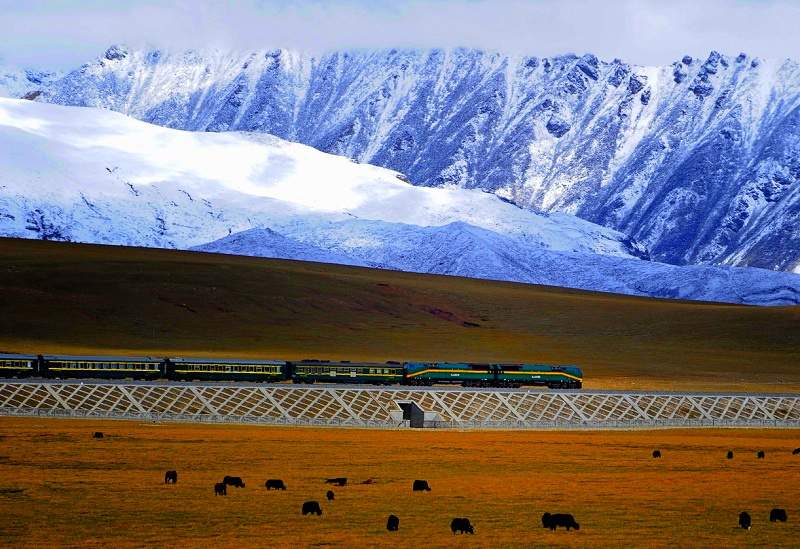
Qinghai-Tibet Railway
Planning Your Lhasa Adventure: Practical Tips
- Acclimatization: Spend your first day in Lhasa at a relaxed pace—hydrate, sip butter tea, and avoid strenuous activity to lessen the effects of altitude.
- Permits: All foreign visitors need a Tibet Travel Permit. Arrange this at least two weeks before departure through a licensed local agency.
- Local Guides: Hiring Tibetan guides or joining small-group tours enhances your understanding of cultural contexts, local customs, and off-the-beaten-path wonders.
- Packing Essentials: Include sunscreen, sunglasses, lip balm, and layered clothing to adapt to temperature swings. A good pair of walking shoes is a must.
- Respectful Travel: Always ask before photographing worshippers or monks, remove hats inside temples, and follow local etiquette when circumambulating sacred sites.
For a truly seamless Lhasa journey, China Dragon Travel offers bespoke Tibet tour packages led by knowledgeable Tibetan guides. From securing train tickets on the Qinghai-Tibet Railway to arranging exclusive access to festivals, our team ensures your pilgrimage through the “City of Sunshine” is nothing short of extraordinary. Contact us today to begin planning the spiritual adventure of a lifetime in Lhasa!



